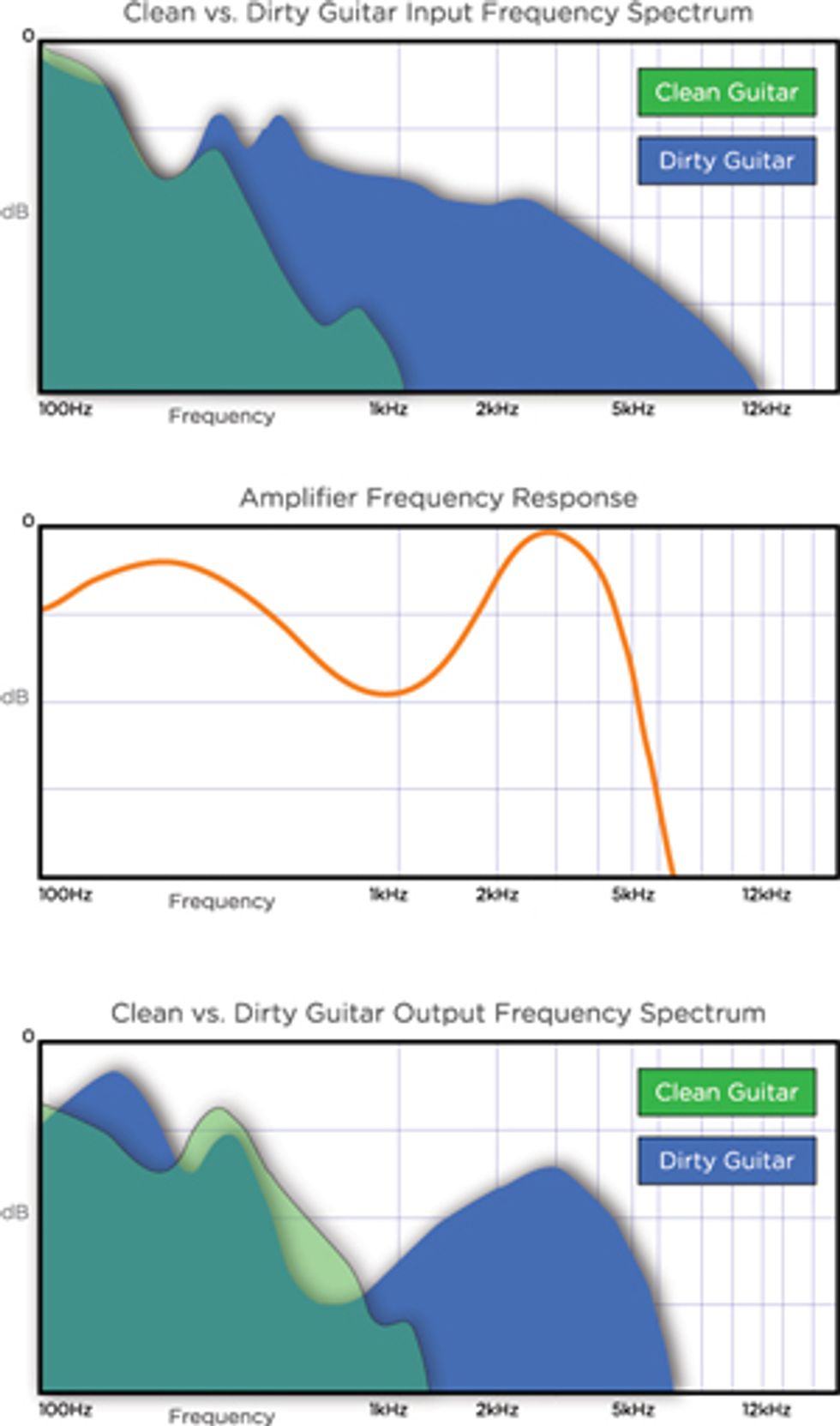
Distorting a guitar signal generates more harmonics. With more harmonics, your amplifier’s inherent tone becomes more dominant.
Unlike a tree falling in the woods, a pedal won’t make a sound unless an amplifier is there to amplify it. (If no one is there to hear the amplifier, that’s a different philosophical discussion entirely.) This may seem a bit obvious, but when we talk of a pedal’s tone we need to discuss it in the context of a particular rig. This is particularly relevant when discussing overdrive, distortion, and fuzz pedals.
In a typical rig, the signal goes from guitar to pedals to amplifier. As the last item in the chain, the amplifier has a great deal of say in the matter of tone. Your amp acts as a “mastering suite” to your pedals, complete with EQ and dynamics, and the results can vary greatly— not only from amp to amp, but within a single amp, depending on the control settings.
When you run your guitar through a dirt pedal, harmonics are generated as the signal gets distorted. Higher gain or more distortion results in more harmonics. With more harmonics, the tone of your amplifier becomes more dominant. To make some sense of this, let’s look at playing an A power chord with no dirt. After the initial strum, the strings’ natural vibration quickly decays to a few harmonics that are much quieter than the fundamental frequencies, which would be 110 Hz and 165 Hz. There would be no appreciable harmonic content above 1 kHz in your “clean” power chord, so your amplifier’s response at 2 kHz doesn’t matter. That same power chord, after running through a fuzz box, will contain a host of appreciable harmonics that extend well beyond 2 kHz, making your amplifier’s response at 2 kHz very important.
Overdrive pedals have lower gain than fuzz pedals—hence fewer harmonics—but many still have distinctive EQ properties. The low frequencies are reduced before clipping for a “tighter” low end, and the high frequencies are reduced after the clipping to create a smoother overdrive. This creates a characteristic “mid hump,” which is really a high and low trough. Not coincidentally, many Fender blackface amps have a “scooped” clean tone, lacking in strong mids, but full of strong lows and sparkling highs. This clean response makes for great chords and rhythm tones, but can be on the thin side for soulful blues soloing. When an overdrive with the mid hump is added for soloing, it’s a match made in blues heaven. This same overdrive in front of a mid-heavy amp may be less satisfying.
Similarly, fuzz pedals that have an extended high- and low-frequency response were originally paired up with Marshall amps that had a famously strong midrange. Place this same fuzz pedal in front of the bright channel of a Fender blackface amp and it might sound thin or buzzy. So when you talk about the tone of your pedal, you’re also talking about your amplifier’s tonestack frequency response, output transformer, speaker, feedback topology, and more. Early dirt pedal designs were made to purposely complement the tonal characteristics of a particular amp. While many newer dirt pedals allow for a higher degree of tone sculpting, they are still subject to variation based on the amplifier they are running into.
So how do you decide what dirt pedal is right for your amp? Generally, the right pedal will have a strong frequency response in areas that your amp is lacking, and vice versa. Ultimately, this is best determined by trial and error. Borrow a friend’s pedal to see how it sounds in your rig, or get suggestions from people who have the same amp as you. If you try out a pedal in a store, try to play through the same amp that you have. As always, you’re the final judge on tone. Have fun playing in the dirt!
 Pete Celi
is the DSP Engineer
at Strymon.
Pete Celi
is the DSP Engineer
at Strymon.






















